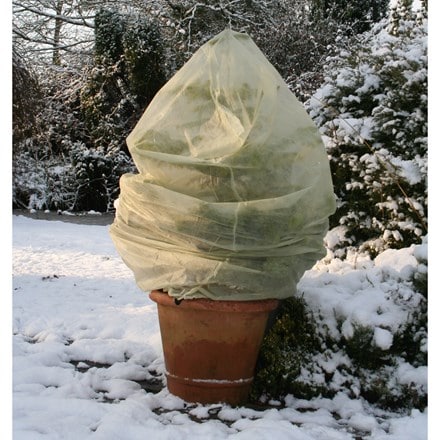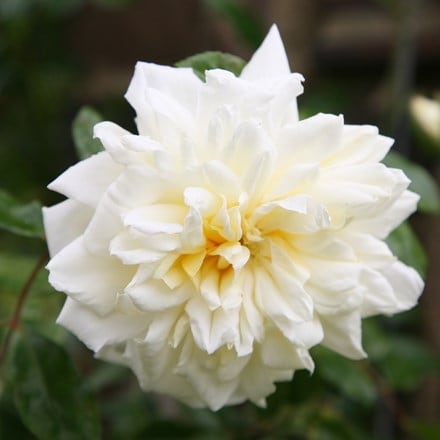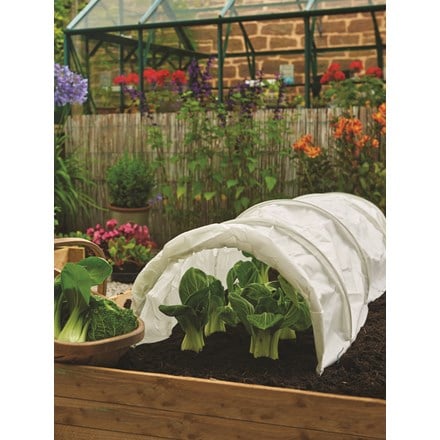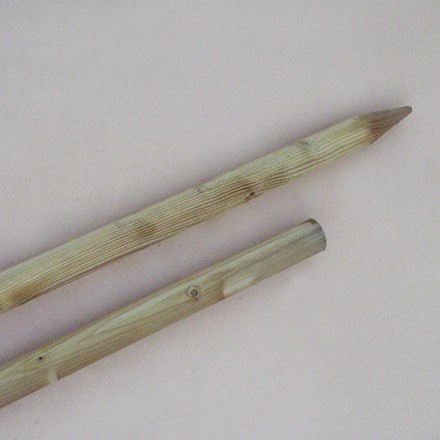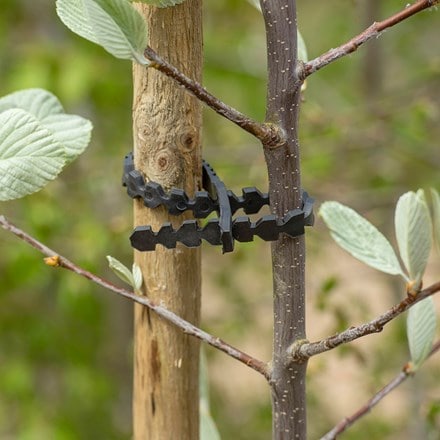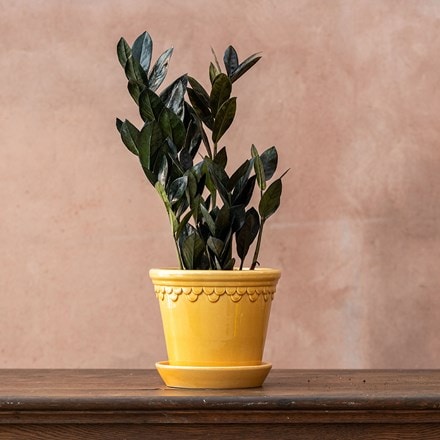
Written by: Crocus Head Gardener Ashley Edwards
November starts to feel like winter has truly arrived in the garden with leaf drop to contend with, evenings growing darker and the winter storms moving in. On the positive side, it is a great time to start planning for next year. Bulb planting can continue into November, and between now and December are the best times to plant Tulips as the soil temps drop below 15C. Bareroot plants can be planted now too and this is a cost effective way to garden. Putting in the work now will pay dividends come spring. At Dorney Court I’m currently cooking up container recipes with new bulb lasagne combinations which I hope to share with you next year. Meanwhile here a few things you can be getting on with this month.
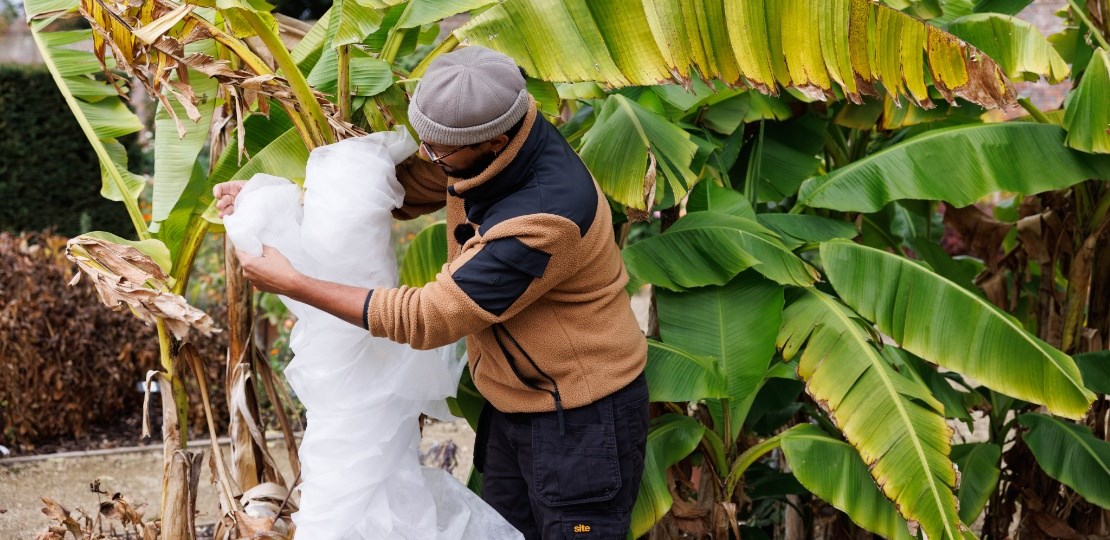
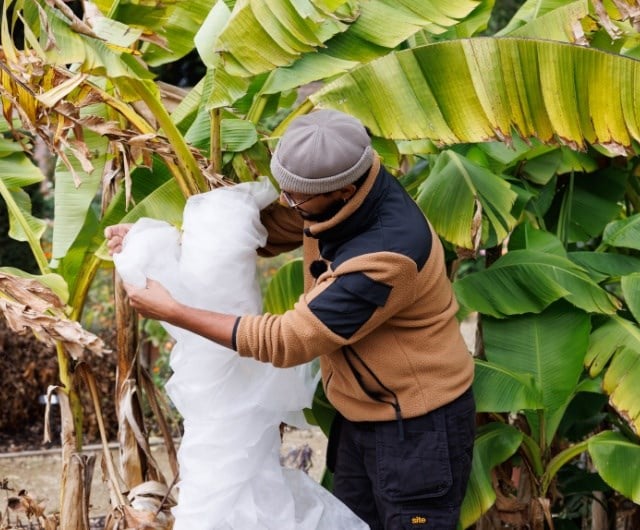
Protecting plants from wild weather
As winters get milder we are experiencing more frequent and intense storms. Living in an urban city, I don’t remember the last heavy frost we had! But living next to tall buildings, the winds can certainly pick up.
Stake Trees - It’s really important to stake your trees correctly when planting them out. This will help them put down strong roots and better withstand strong winds. Place your stake at a 45 degree angle to the tree’s trunk and attach with a soft tree tie in a figure of 8 loop. Remember to loosen your tree tie as the trunk grows. 1-3years after planting you should remove the tree stake so that the tree forms it’s own strong roots. Test the tree by gently rocking it, if there is no rootball movement then you can remove the tree stake.
Secure Pots - if you have pots on steps or on a balcony you may want to consider moving them against a wall to protect them from wind. Pots in alleys or on corners of buildings will be at risk too. You could also gather them together to help stabilise the pots and provide some buffer against wind.
Frost protection - If a severe frost is forecast, use fleece to wrap your more tender plants. If they are in containers, move them close to a warm garden wall for added protection. Wrapping your pots in fleece will also help to protect root from damage.

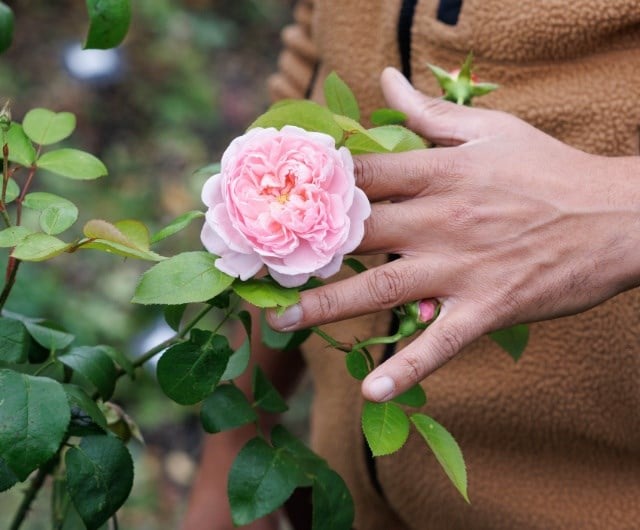
It’s a great time to plant roses
Now is a great time to plant roses as they are moving into dormancy, but will get their roots settled in the ground. This will give them an advantage next year when spring comes and buds begin to break. If you are planting potted roses, dig a hole to around double the size of the container, place your rose in the hole, back fill and add in some good organic garden compost. Firm in the soil to get rid of any air pockets and water well. Apply a layer of organic mulch and keep an eye on watering if conditions are very dry. If you are planting a standard rose you may need to add a stake or cane to support it until strong roots have formed.
All our roses are grown in an open field and then dug up when the weather conditions are right in November. We pot ours up as it helps to keep the roots hydrated and in good condition. As they are dormant throughout the winter, they will not produce any new roots until spring, so don't be surprised if the compost falls away from the roots when you take them out of their pots. The roses can be kept in their pots throughout the winter provided they are kept well fed and watered, however ideally they should be planted out as soon as possible. They will already have been cut back so no further pruning will be required.

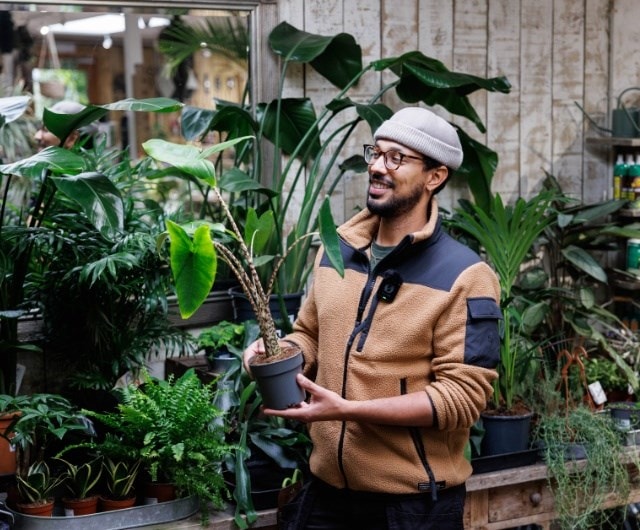
Give your indoor plants some TLC
Houseplants may require a little more attention over winter to keep them looking their best. When it's looking a bit gloomy outside, I find that houseplants can offer some much needed greenery and bring a room to life. Houseplants can suffer when we switch on our central heating. Many are from tropical regions of the world, where the air is thick and humid. Use a spray bottle to mist your houseplants daily, or more if you have the time, and avoid placing plants near radiators. You could also move them to the bathroom, if it has natural light, to enjoy the humidity.
Unlike plants outdoors, many houseplants will continue to grow. They may still need liquid feed once a week, but half the amount. It’s easy to overwater in winter, so reduce the amount you are giving your plants to avoid root rot or fungus gnats. If you have a tray underneath your houseplants, make sure to empty it and not let them sit in water. Watering your houseplants from the base will help to prevent overwatering. As the hours and intensity of daylight reduces, move your plants closer to windows if you can, but make sure not to trap them behind curtains on windowsills where cold air accumulates. Keep leaves dust free by wiping over with a damp cloth, helping them to photosynthesise. I have quite a collection of houseplants and a few of my favourites are:
ZZ plant (Zamioculcas zamiifolia) - which is very forgiving if you go away on holiday and has beautiful arching thick green stems and waxy leaves. Be careful not to overwater this plant as the stems can rot at the base.
Snake Plant (Dracaena trifasciata) - which is actually in the asparagus family and comes in many different colours. Again they are very forgiving and you can propagate new plants from leaf cuttings which is a really cool process to witness. The thick leaves store water so they can be given a chance to dry out before watering again.
Golden Pothos (Epipremnum areum) - I have lots of these trailing over the edges of bookshelves and hanging from the tops of cabinets. It’s actually a climbing plant and if you give it a moss pole will form a neat upright houseplant. They like to be kept evenly moist and you can mist the aerial roots too.
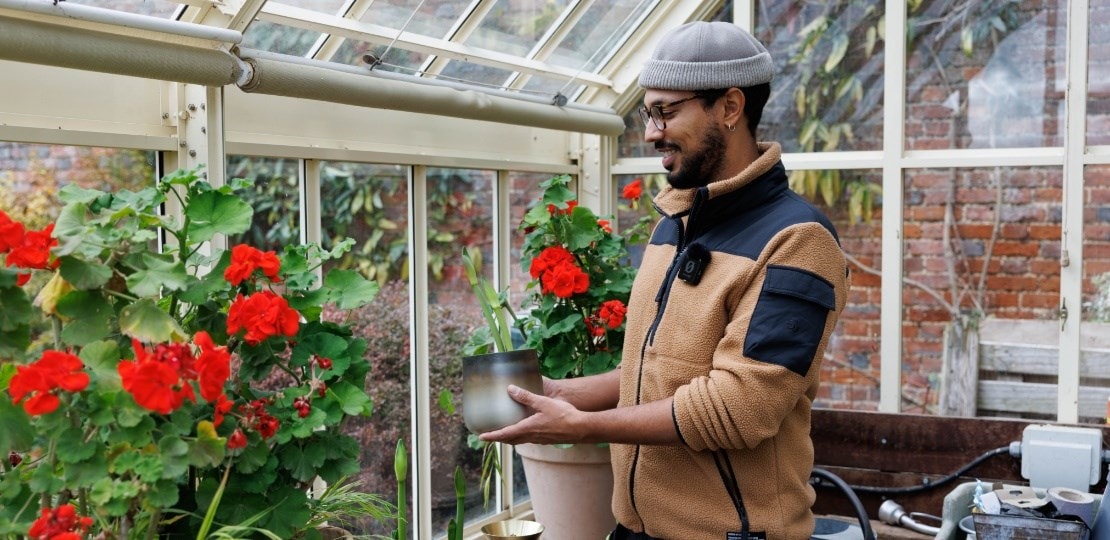
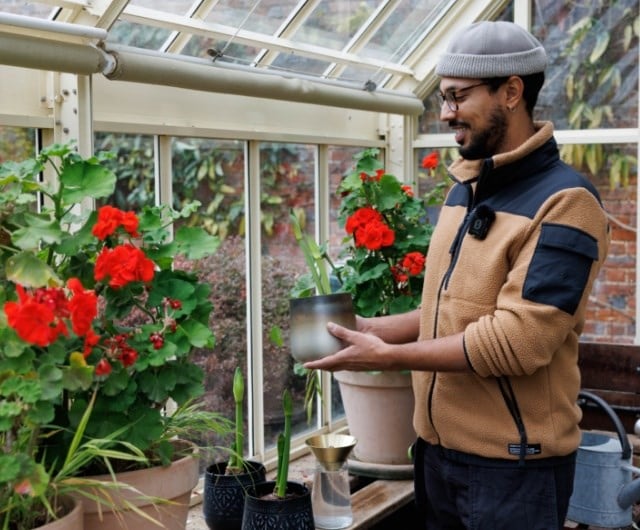
Planning ahead for indoor blooms
If you’re like me and already thinking of spring, bringing some bulbs indoors will help to brighten your space. Indoor flowering bulbs also make great seasonal gifts, and last a lot longer than cut flowers. You can buy forced bulbs that are ready for indoor flowering, or you can force bulbs yourself. To do this, store your bulbs in a paper bag in the fridge for 10-15 weeks.
Bring them out and pot them up into a free draining gritty soil. Many bulbs like amaryllis don't need soil and can be displayed in a glass vase with pebbles and water. You can also get special forcing jars for hyacinths which allow them to sit just above the water, forming roots and flowering.
Place your bulbs in a bright spot, like a windowsill, and they will begin to shoot. Keep rotating the bulbs so that they don’t bend too much towards the light. Adding branches of silver birch or dogwood helps to support taller plants like Paper Whites, but also provides a decorative effect.
Enjoy the blooms and scent of your indoor bulbs and when the flowers are finished you can plant them in the garden. Deadhead and allow them to die back and they will return again next year.
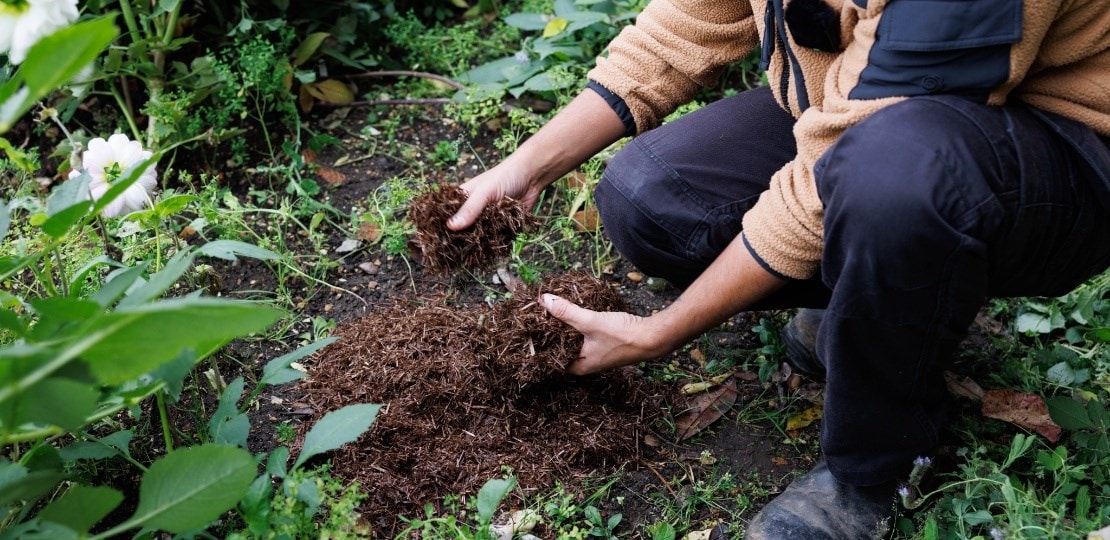
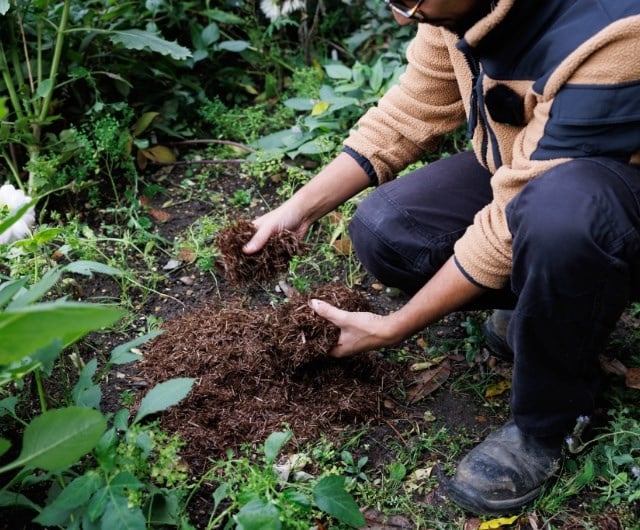
Feed your soil and protect roots over winter
As herbaceous plants begin to die back, it’s a good time to mulch your beds and borders. Use your own garden compost if you have been making it. This will encourage beneficial microbes and decomposers like worms, creating a well drained friable soil for your plants.
Bark chips are also great for adding to beds and borders. If you have very fresh bark chips, be careful as they can affect the pH and nutrition of the soil as they break down. Composted bark is great as the nutrients it contains are more readily available.
Mushroom compost is a good option if you have poor soil and want to add more organic matter. It retains moisture well and will be incorporated in by worms and other invertebrates. Mushroom compost can be on the alkaline side of the pH scale, so I wouldn’t recommend it for ericaceous plants.
When mulching, always remember to keep it clear of woody plant stems and tree trunks, as mulch can cause rot if it’s up against bark. A layer of 5cm of mulch for an established bed is usually good to retain moisture and suppress weeds. You can lay a thicker layer of 7-8cm if the area you’re working on has never had mulch.
Leaves collected this time of year can be bagged up and stored for a year or two. After this they will have turned into crumbly black leaf mold, ready for spreading around the base of trees and shrubs or mixing in with potting compost. Leaf mold is low in nutrients but excellent for soil texture and helps to add the organic matter needed for drainage. It’ll also encourage a good soil microbiome and beneficial fungi. It’s a free resource, so make the most of it! Avoid leaves that are diseased or have pests living in them, such as rose black spot or horse chestnut leaf miner.
Resist the urge to chop everything back this time of year, but if you do need to tidy areas of the garden, try the chop and drop method. Simply cut back your fading herbaceous plants piece by piece, allowing the fallen material to remain on the soil surface and decompose. This will also provide shelter for beneficial insects over winter.
Doing this work now means that your plants will have a head start in spring, and nutrients from the mulches will be slowly released over a period of time.



